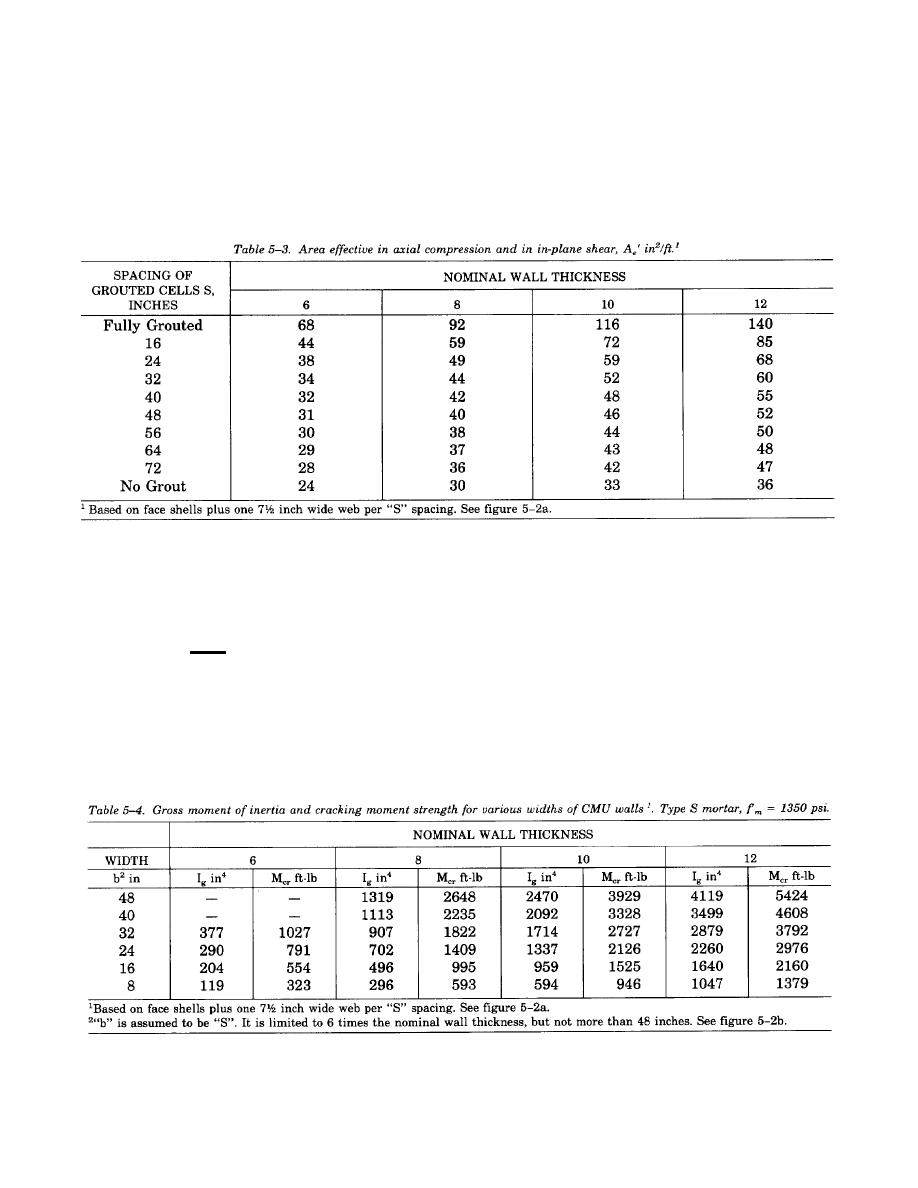
TM 5-809-3/NAVFAC DM-2.9/AFM 88-3, Chap. 3
(3) Effective area. The effective area of hollow masonry used in design vary and are generally
dependent upon the thickness of the face shells and the cross-webs, the width of grouted core, and the type
of mortar bedding used in construction. Since contractors may use standard two-hole (plain or concave ends)
or open-end concrete masonry units, and since exact configuration may vary between manufacturers, the
precise effective area will be unknown at the time of design. The assumed effective areas for different loading
conditions will be as illustrated in figure 5-2. Effective areas for masonry walls loaded in compression or in
shear parallel to the wall are given in table 5-3. The effective area will be adjusted to reflect loss of area
resulting from the use of reglets, flashing, slip-joints, and raked mortar joints.
(4) Effective width of flexural compression block. The effective width of the flexural compression stress
block of reinforced masonry placed in both running and stacked bond patterns will be as illustrated in figure
5-2. The effective width will not exceed the spacing of the reinforcement, S.
be determined as follows:
2Igfr
(1b&in)
Mcr '
(eq 5-7)
t
fr = the modulus of rupture for calculating deflection equal to 2.5%f'm, 2Ig/t is the section modulus,
Where:
psi.
t = The actual thickness of the wall, inches.
Ig =The gross moment of inertia of the wall, in4.
The cracking moment strength along with the gross moment of inertia, Ig, are listed in table 5-4 for various
wall thicknesses and reinforcing spacing.
(6) Design aids. Section properties of reinforced masonry with type S and N mortars are given in
appendix B, tables B-1 through B-14.
c. Weight of masonry. The design examples and tables included in this manual are based on normal-weight
hollow masonry units. Normal-weight units are assumed to have an oven-dry weight of concrete of 145
5-4


 Previous Page
Previous Page
